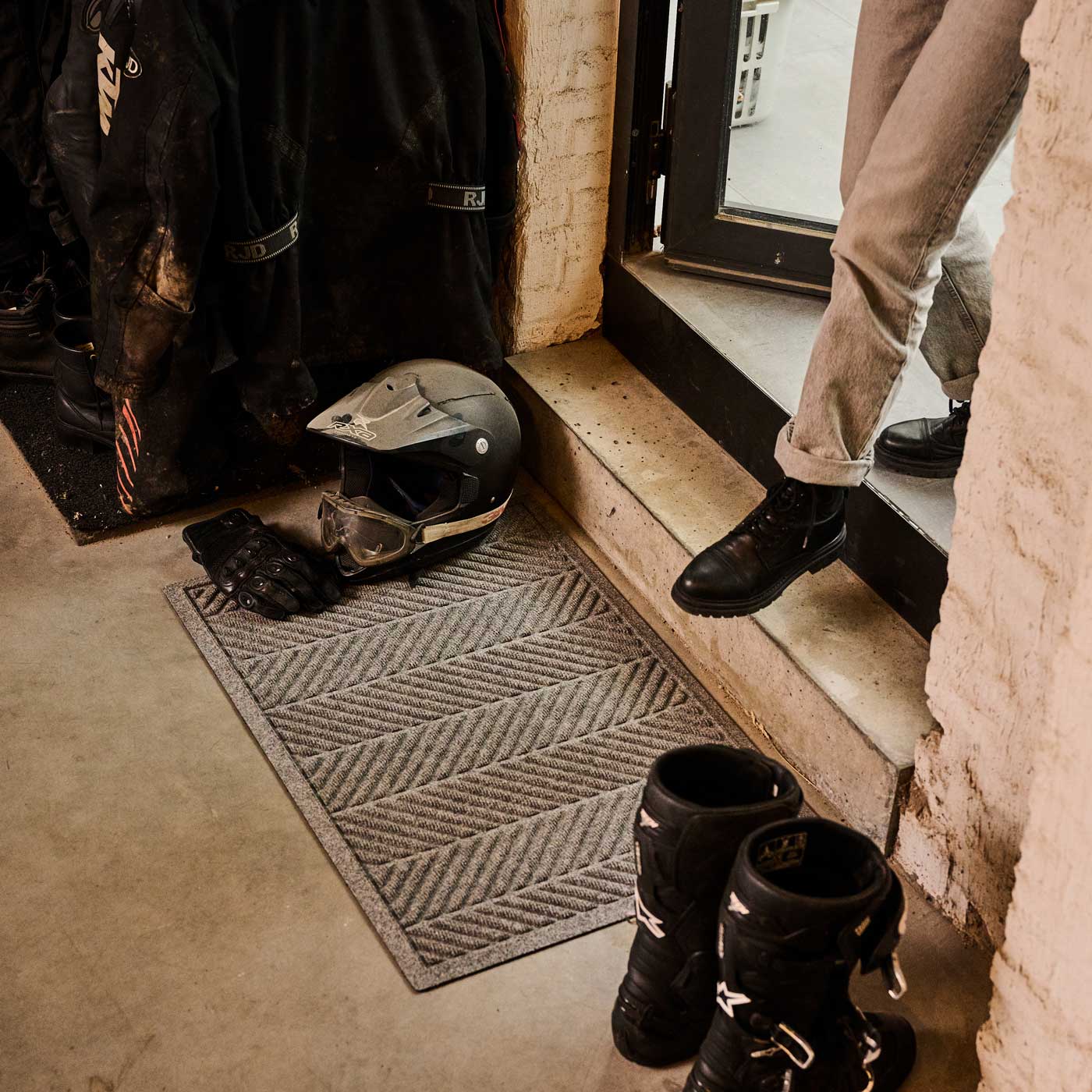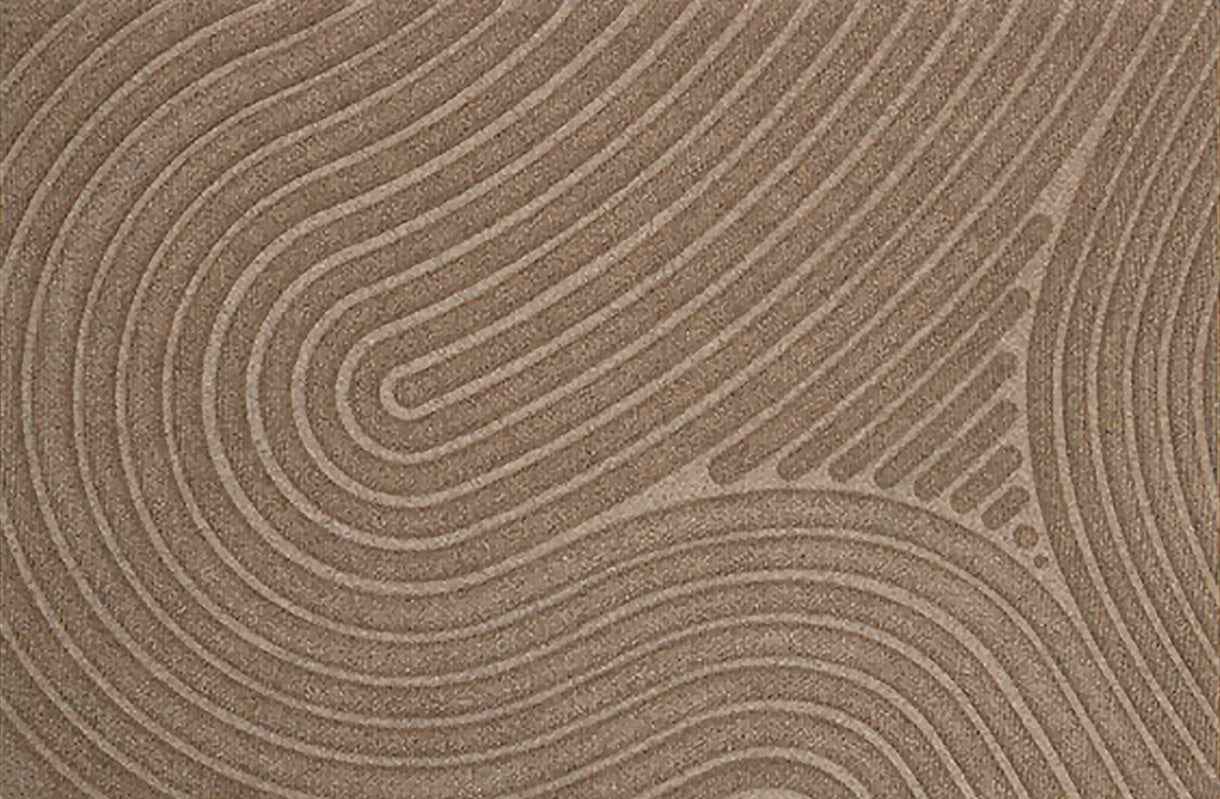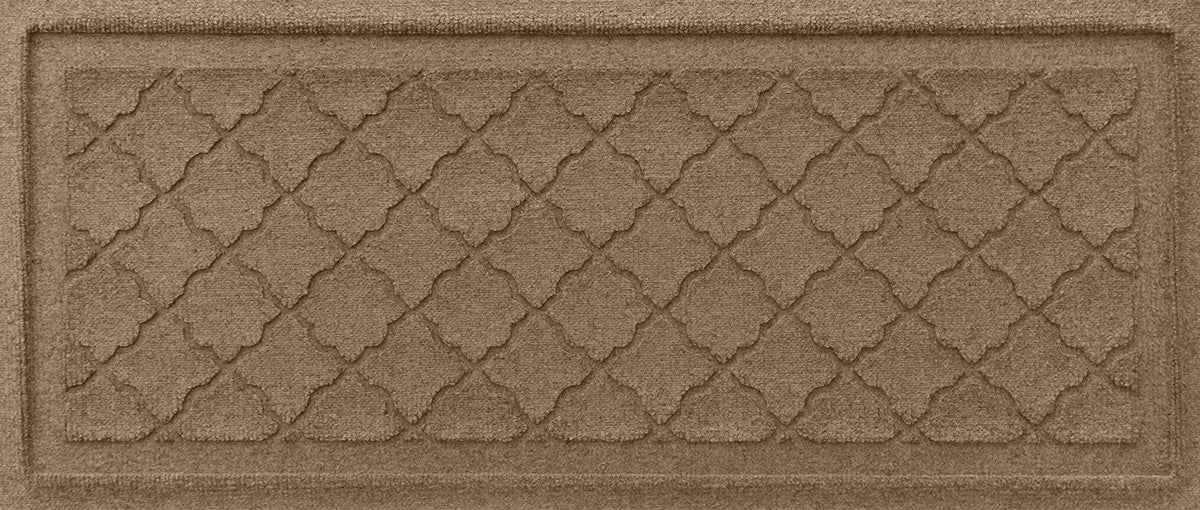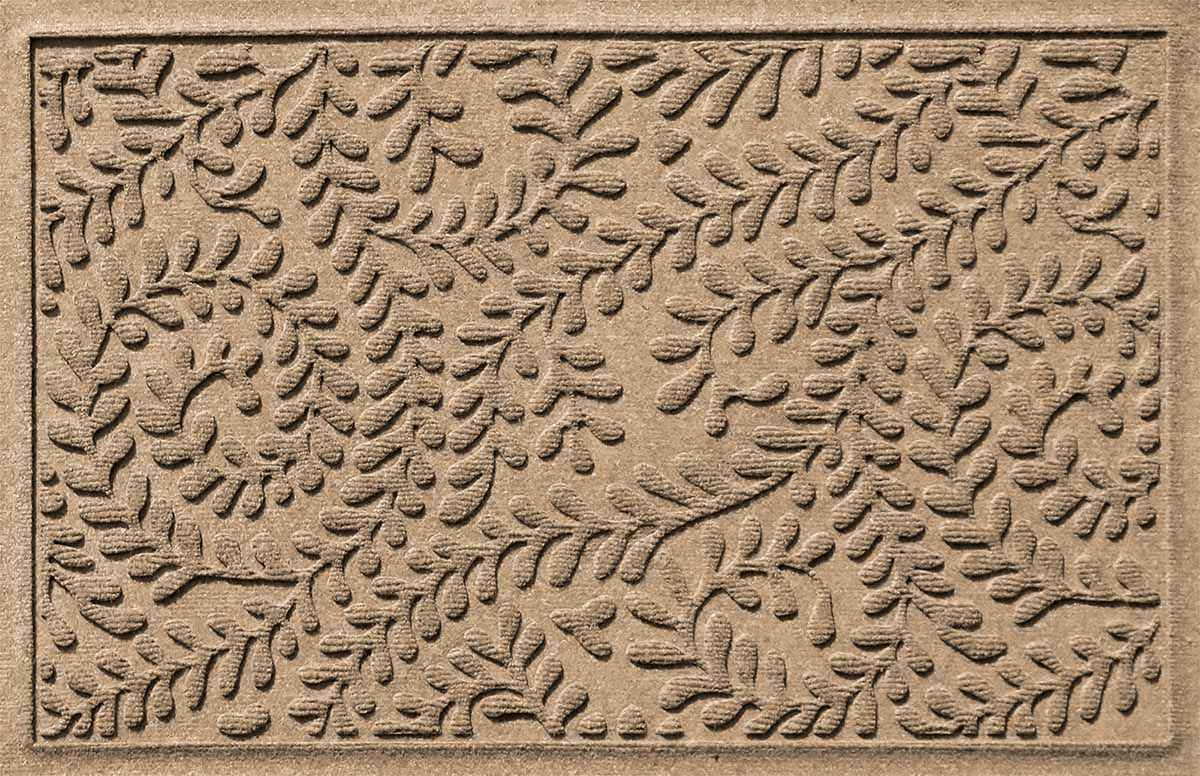Article: Your Door Mat Is Wrong: Hidden Signs It's Time for a New One
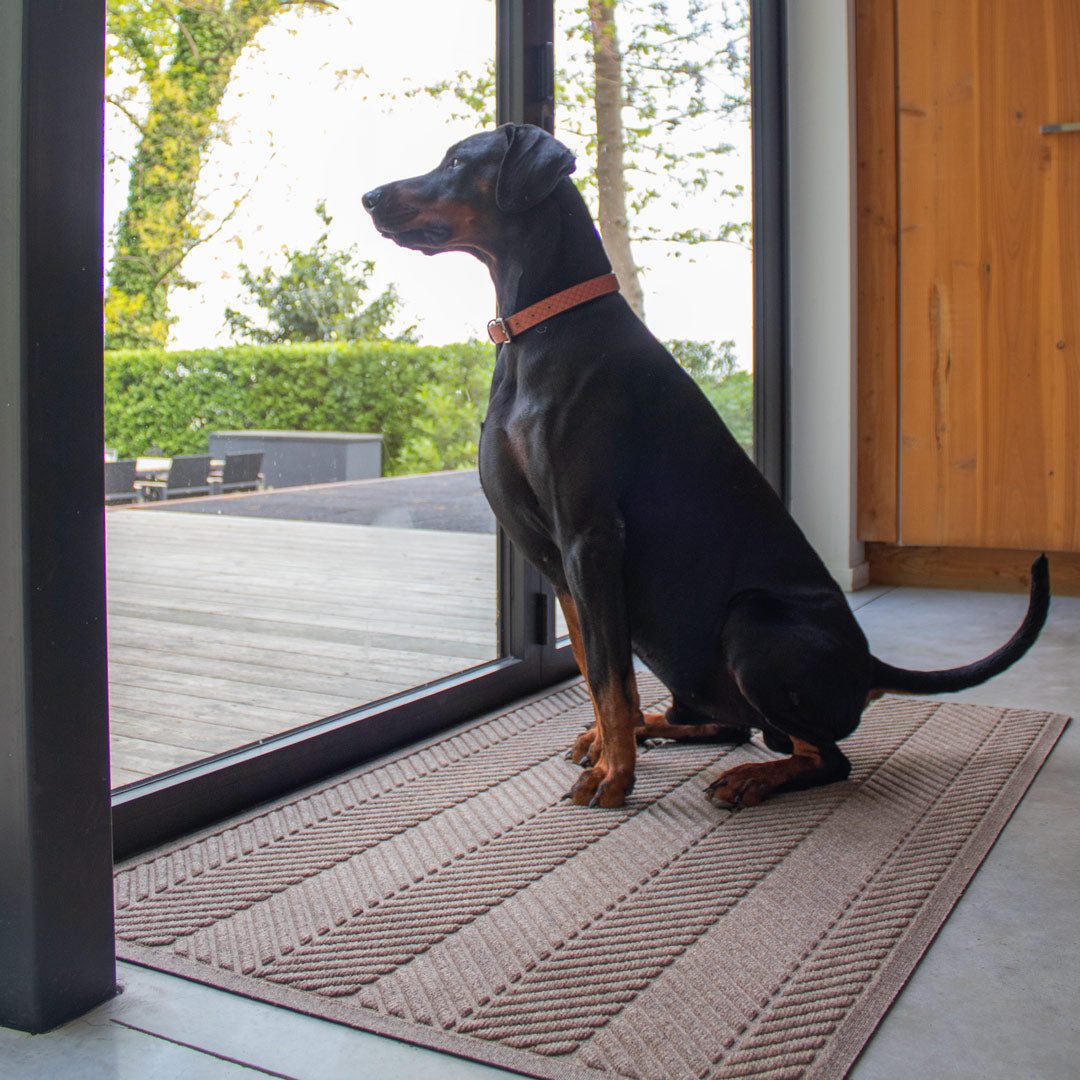
Your Door Mat Is Wrong: Hidden Signs It's Time for a New One
Six signs your door mat is failing you
Your door mat takes a beating. Day after day, it stands guard against mud, rain, snow & whatever else the world throws at your threshold. But even the toughest mat eventually shows its limits.
Spotting these warning signs early keeps dirt where it belongs—outside your home.
1. It no longer traps dirt effectively
A door mat has one job: to stop dirt before it enters your home. When dirt starts slipping past your defenses, your mat is failing its most basic test.
Quality mats capture debris in their fibers. They hold it. They don't let go. But worn-out mats lose this grip. You'll notice:
- Dirt trails leading straight into your home
- Debris sitting on top instead of getting trapped
- More sweeping needed around your entryway
- Dirt sticking to shoes rather than coming off
Coir fibers break down. Synthetic surfaces get smooth & slippery. When your mat can't grab dirt anymore, it's time to move on.
2. Curling or fraying at the edges
Curled edges don't just look bad—they're dangerous. A door mat that trips people isn't protecting anyone.
This happens when materials break down or face temperature swings they can't handle. Once edges start lifting, the damage spreads fast. Loose fibers catch on shoes. Each step pulls more material away.
You can try flattening it with heat or weights. But these are band-aid fixes for a mat that's already lost the fight.
p.s. an old trick from my mother, put ice cubes on the curled corners, let it melt and dry.
3. It slips when you step on it
A sliding door mat is a hazard waiting to happen. If your mat won't stay put, it's not doing its job.
The backing wears out. The grip fails. Suddenly you're dealing with a moving target every time you walk through your door.
Anti-slip tape might help temporarily. But constantly repositioning your mat? That's a clear sign it's given up on one of its core functions.
4. It smells musty or stays damp
That musty smell isn't just unpleasant - it's a warning. Your mat should absorb moisture, then release it. When this process breaks down, you get mold & mildew.
A mat that stays damp long after the weather clears has lost its moisture management. This is especially true for absorbent materials that hold water too long.
Your door mat should dry out reasonably quickly. When it doesn't, it becomes part of the problem instead of the solution.
5. Colours have faded significantly
Faded colours tell you more than you might think. They signal that the material itself is breaking down - not just losing its looks.
Sun, foot traffic & cleaning take their toll. For outdoor mats especially, UV damage weakens both dyes & structural fibers. A heavily faded mat is likely compromised throughout.
Plus, a washed-out door mat makes your entrance look neglected. First impressions matter.

I love this meme btw, perfect showcase of WaterHog benefits.
6. It no longer fits your space properly
Size matters with door mats. You need coverage for at least 80% of your doorway width. Both feet should hit the mat with room for two full steps.
Some mats shrink over time, especially natural fiber types. Others were never the right size to begin with. When people step around your mat instead of on it, you've lost the battle.
A proper mat sits flush & even. No bumps, no lumps, no trip hazards. Just solid performance where you need it most.
These six signs don't lie. When your door mat starts failing these basic tests, it's time for a replacement. Because a door mat isn't decoration—it's your first line of defense against the outside world.
If you experience any of these problems with your door mat, then Shop WaterHog Mats
Can you put a door mat in the washing machine?
Your door mat takes a beating. Mud, dirt, grime—it handles everything you throw at it. So when it's time for a deep clean, the washing machine seems like the obvious choice.
Not so fast.
Some door mats thrive in the spin cycle. Others won't survive it. The difference comes down to materials, construction & common sense.
Materials that handle the wash
Cotton door mats are built for this. They're 100% machine washable and actually improve with washing, just like your favourite towels. Tough, reliable, effective.
Microfiber door mats pack serious absorbency—holding up to seven times their weight in water—and clean easily in standard machines. Perfect for indoor use where you need gentle performance on delicate floors.
Rubber-backed synthetic mats (PET aka WaterHog Mats) can often handle machine washing, but check the manufacturer's instructions first. These workhorses are designed for high-traffic areas like entryways & hallways.
Textile & synthetic options are specifically engineered for regular machine cleaning. No guesswork required.
Materials that don't make the cut
Coir door mats should never see the inside of your washing machine. Made from coconut husks, they'll become waterlogged and potentially damage both the mat and your machine. These natural fiber champions need different care.
Jute mats fall into the same category—natural fibers that can't handle the machine treatment.
Oversized mats larger than 60x90cm (about 2ft x 3ft) simply won't fit in most domestic machines. Size matters.
Here's a little infographic to help you with size when machine washing.

Before you wash: essential checks
Check the care label first. If it says "hand wash only" or "do not machine wash," believe it. These instructions exist for good reason.
Assess the material. Cotton, microfiber & some rubber-backed synthetics typically pass the test.
Consider the size & weight. Your machine has limits. Respect them.
Examine the backing for cracks or peeling. Damaged backing will only get worse in the wash.
When in doubt, contact the manufacturer. Better safe than sorry.
Washing done right
Prep work: Shake or beat the mat outdoors first. Remove loose debris before it clogs your machine. Vacuum both sides thoroughly. Pre-treat stubborn stains with mild detergent.
The wash: Place the mat loosely in the machine—give it room to move. Use a gentle cycle with cold water (30-40 degrees) to protect fibers & backing. Add mild, non-bio detergent without optical brighteners to prevent fading.
Skip fabric softeners & bleach. They damage materials. Reduce spin speed to low (around 400) for gentler treatment.

Drying: Air dry only. Hang it over a railing or lay it flat in a well-ventilated area. Heat from dryers damages rubber backing and shrinks natural fibers. Make sure it's completely dry before placing it back—moisture breeds mold & mildew.
For non-washable mats, stick to spot cleaning, regular vacuuming & carpet cleaners for deeper sessions.
Follow these guidelines and your door mat will keep working hard for years to come. Because a clean, functional mat isn't just about appearance—it's about protecting your floors & keeping your home welcoming.
Can you put a door mat outside?
You can put a door mat outside. That's where the toughest mats prove their worth.
Rubber door mats dominate outdoor spaces. Built from recycled or natural rubber, they withstand heavy traffic, harsh weather & serious scraping action. Rain won't stop them. Snow won't slow them down. They grip when wet, drain when soaked.
Polypropylene mats fight back against sun damage. These synthetic warriors resist UV rays without fading, making them perfect for sun-baked entryways. Drainage holes prevent water buildup.
Coir mats with woven backing work in sheltered spots. Coconut fiber delivers serious scraping power, but only under cover. Proper shelter lets coir trap dirt effectively before it reaches your floors.
Weather resistance and drainage
Some other things you need to consider:
Drainage capability separates winners from losers. The best outdoor mats channel water away instead of holding it. Rubber mats with drainage holes let water escape while scraping dirt clean. No puddles. No standing water. Just dry, safe entrances.
Temperature resistance matters more than you think. Quality rubber mats handle -20°C to +130°C without cracking. Scorching summers. Freezing winters. They endure both.
UV protection prevents breakdown. Continuous sun exposure destroys weak materials. Mats built for outdoor use include UV-resistant treatments that stop fading & material degradation.
When to avoid placing mats outside
Some door mats belong indoors. Period.
Skip absorbent mats like cotton or microfiber outdoors. They become waterlogged, stay wet & breed mold. Save absorbent materials for indoors where they capture moisture without drowning.
PVC-backed coir mats trap water underneath. Poor drainage accelerates rot in both mat & doorstep.
Aluminum mats become skating rinks when wet. Slippery surfaces create hazards, not solutions.
Unprotected coir mats rot fast. Without proper drainage & regular drying, natural fibers deteriorate rapidly.
The smart approach: dual defense. Tough WaterHog mat outside removes the worst debris. Another WaterHog mat inside catches what remains. Two mats working together protect your floors while welcoming guests properly + if you do this you'll get free delivery ;)
Which door mat works best?
Indoor mats need one thing: serious absorption and Outdoor mats need scraping ability. Our Recycled WaterHog door mat waters and scrapes due to the bi-level design. That's not marketing speak—that's real performance for rainy climates. Its non-slip backing stays put under heavy foot traffic.
Materials compared: what works, what doesn't
Coir: Scrapes hard, looks natural, biodegradable. But it sheds, clogs, and rots when soaked.
Rubber: Bulletproof durability, perfect drainage, weather-proof. Heavy and limited designs.
Synthetic: Good scraping, water-resistant, colorful options. Less effective than coir, less absorbent than alternatives.
Choose based on real conditions
High-traffic areas demand rubber or nylon. Period. These materials handle constant punishment without breaking down.
Rainy climates need drainage. Rubber mats with holes or moisture-wicking synthetics perform when it matters.
Extreme weather calls for the two-mat system: WaterHog outside, WaterHog inside. Double protection works.
The best door mat matches your reality—location, weather, and foot traffic. Choose accordingly.
Now you might be considering buying a new door mat, but think of cleaning before you splash the cash.
Remove debris the right way
Shake it. Beat it. Vacuum it.
Small mats get the shake treatment—take them outside & give them a vigorous beating. Larger mats that won't budge? Sweep first, then vacuum both sides thoroughly.
For stubborn dirt, sprinkle baking soda generously. Let it sit for thirty minutes. Vacuum it up. Gone - dirt & odours.
Clean by material, not by guesswork
Different mats demand different approaches. Here's what works:
Coir mats: Never put these in washing machines. Mix mild detergent with warm water. Scrub with a stiff brush. Rinse thoroughly but don't soak the mat.
Rubber mats: These handle water like champions. Mix dish soap with hot water, scrub with a brush, rinse clean. Or hose them down outside—they can take it.
Cotton & microfiber: Most go in the machine at 40°C. Use non-bio detergent. Skip the fabric softener.
Synthetic mats: Check the label first. Some are machine washable, others need spot cleaning with mild soap.
When to replace your door mat
If you have tried to revive your door mat but it has sadly passed away here's what you need to know...
Average lifespan of different door mat types
Your door mat's lifespan depends on what it's made from and where you place it. Coir door mats last 6-12 months in high-traffic areas, stretching to 2 years in quieter spots. Natural fibers break down. That's reality.
Commercial entrance mats endure 2-3 years in busy areas, sometimes 5 years in lighter-traffic zones. Moisture cuts that time short—expect 1-2 years for constantly wet conditions.
Outdoor door mats face the worst conditions. Rain, snow, sun, and mud take their toll. Replace them every 1-2 years. Indoor mats last longer when properly maintained.
How wear and tear kills performance
Worn door mats don't just look bad—they become hazards. Frayed edges create tripping risks. Smooth, worn surfaces let dirt slip past instead of trapping it.
Faded colors signal deeper problems. The material itself is breaking down. A mat that stays dirty after cleaning has lost its grip on dirt and debris.
Most dangerous: mats that slip and slide. Deteriorated backing turns your safety feature into a fall risk. Replace it immediately.
Tips for choosing a long-lasting replacement
Pick quality materials for your specific conditions. High-traffic areas need industrial-grade rubber or heavy-duty synthetics.
Use a two-mat system. Place a scraper outside, an absorbent mat inside. Both last longer when they share the load. Invest in thicker, better-built options from the start.
Maintain what you buy. Turn mats regularly. Vacuum often. Keep them dry when possible. Simple habits extend mat life and protect your investment.
Quality door mats prove themselves through daily use. Choose wisely. Maintain properly. Replace when performance drops.
Wrap Up Time.
Your door mat works harder than you think. It battles mud, rain & debris every single day. But when it starts failing, you'll know.
Whether you're dealing with a worn coir mat or hunting for the perfect Waterhog, recognizing failure signs saves you trouble. A mat that curls, slips, or stops trapping dirt has given up the fight.
Material choice matters. Rubber mats excel outdoors with their drainage & durability. Cotton and microfiber options work best indoors where absorbency counts. WateHog door mats deliver both—trapping moisture and dirt while keeping their looks.
Proper care extends any mat's life. Vacuum it. Clean it right. Place it smart.
A quality door mat isn't decoration—it's protection. Choose the right one for your needs. Maintain it properly. Your floors will stay cleaner, your home safer, your guests welcomed.
Time to check your current mats. If they're failing, replace them. Your entrance deserves better than a beaten, ineffective mat that's lost its fight.
FAQs
Q1. How often should I replace my door mat? Typically, door mats should be replaced every 6 to 24 months, depending on factors like material quality, weather exposure, and foot traffic. High-traffic areas may require more frequent replacements, while well-maintained indoor mats can last longer.
Q2. What are the signs that I need a new door mat? Look for frayed edges, worn spots, persistent stains, fading colours, or a mat that no longer effectively traps dirt. If your door mat slips, curls at the edges, or feels constantly damp, it's time for a replacement.
Q3. Which material is best for an outdoor door mat? Rubber door mats are excellent for outdoor use due to their durability, weather resistance, and drainage capabilities. They withstand various weather conditions and are easy to clean, making them ideal for exterior placements.
Q4. Can I wash my door mat in a washing machine? It depends on the material. Cotton and some synthetic door mats are often machine washable, while others like coir or heavy rubber mats are not. Always check the care label or manufacturer's instructions before machine washing your door mat.
Q5. How can I extend the life of my door mat? Regular maintenance is key. Shake out debris weekly, vacuum thoroughly, and deep clean monthly. For outdoor mats, ensure proper drainage and lift occasionally to dry underneath. Rotate the mat periodically to distribute wear evenly, and address spills promptly to prevent staining.

